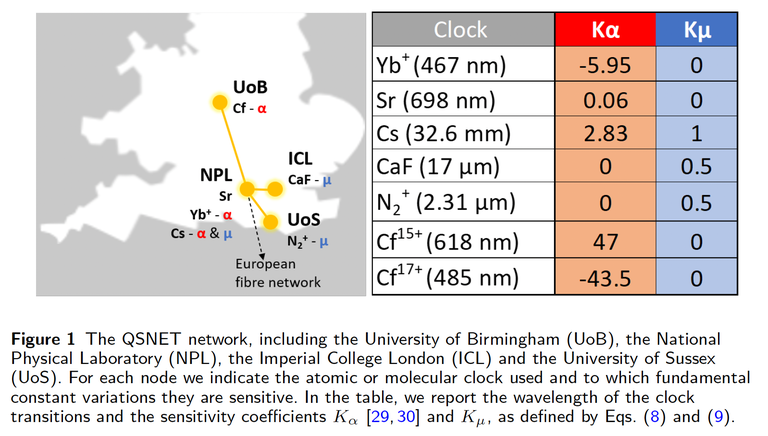The QSNET Project
The QSNET project is a future network of up to seven clocks located in the southern UK (cf. table below). The clocks employ atoms, ions and molecules; between 100 and 106 particles are kept in traps and define the clock frequency with the help of a suitable electronic transition. The clock frequency is transferred to a laser and the encoded information can be sent to a different site with the help of dedicated glass fibre cables. In this way, frequency ratios of various clock pairs can be measured as a function of time with a rate of about 1 Hz.

Any variation of the frequency ratio can be an indication for a variation of fundamental constants like the fine-structure constant α and the electron-to-proton mass ratio μ. Different clocks are expected to respond differently to a variation of α and μ. The table above lists the so-called sensitivity coefficients Kα and Kμ for the various clocks. A ten times bigger Kα implies a ten times better sensitivity to find an α variation. When combining two clocks the overall sensitivity is proportional to the difference of the Kα factors of the clocks (and similarly for Kμ).
The local group is involved in the construction of the Californium-ion clocks (Cf15+ and Cf17+), the exploration of suitable data analysis methods and the physics reach of the project. More information can be found in the QSNET White Paper from which also the plot above was taken.
